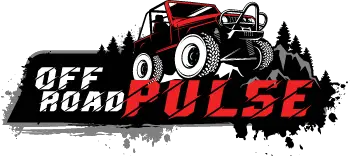Off-roading is undoubtedly one of the best ways to spend time with family and friends outdoors. It offers a great opportunity for sightseeing while allowing you to explore new places. However, to get the most out of your trail riding, you may want to take your time and invest in an ATV that is not only comfortable but also fun to ride. You also need to consider the specifications of your ATV to ensure it has the capability to take on different terrains.
Polaris has been in the ATV trade for a long time, and it has earned respect among ATV owners for its consistency. Polaris ATVs score high when it comes to power, and the Predator 500 is no exception. The Predator is one of the most reliable machines on the market, thanks to its resilience and easy-to-use features.
The machine packs plenty of power which makes it easy to maneuver even when tackling the toughest trails, making it a popular choice for sport ATV riders. Furthermore, the Predator 500 competes comparably with other ATV models, but like any off-road machine, it can potentially run into problems, but this is expected.

Polaris Predator 500 Review
Polaris Predator is an ATV sport quad designed to get you ready to take on the trails and prepare you for your next adventure. The quad bike is one of the company’s best all-rounded machines, manufactured from the year 2003 to 2007.
The Predator is designed for maximum support and comfort of the rider while allowing you to ride in style. The quad is also equipped with plenty of features, including a 499 cc displacement engine, 5-speed manual transmission, and superb ground clearance to let you tackle obstacles in your trails and get across dips with minimal hassle.
Polaris Predator 500 Specs
| Engine | Displacement – 499 cc Engine Type – single cylinder Engine stroke – 4 Valve configuration– DOHC Ignition– electric start Carburetor – 42 mm BSR carburetor |
| Transmission | Transmission type – manual with a reverse gear Number of speeds – 5 Speed Drive system – chain |
| Brakes | Front brakes – dual hydraulic disc Rear brakes – single hydraulic disc |
| Tires | Front tires – Maxxis RAZR 21 X 7-10 Rear tires – Maxxis RAZR 20 X 11-9 |
| Dimensions | Length – 71.52 inches Width – 47.5 inches Height – 45 inches Wheel base – 50.5 inches Ground clearance – 4.5 – 5 inches Turning radius – 5.6 ft. |
| Number of seats | 1 |
| Fuel capacity | 3.3 gal. |
| Suspension | Front suspension – dual A-arm with 10” of travel Rear suspension – Swing-arm with 10” of travel |
Features and Highlights
i. Convenient steering system
The Predator 500 utilizes Polaris’s proprietary PRO (i.e. Polaris Rider Optimized) steering wheel system, which is engineered to allow the rider to remain in control through the trails and around every corner. The idea behind this kind of steering system is to ensure optimal rolling of your wheels, especially when maneuvering the toughest terrains.
The steering wheel is also designed to ensure an extended life span of the tires while providing for proper angles when turning as well as braking in tight spaces. Furthermore, the adjustable steering wheel allows the rider to turn the quad with minimal struggle while maintaining directional stability.
ii. Adjustable suspension
Perhaps one of the main reasons that make the Predator a force to reckon with is its adjustable suspension. This construction allows you to have better control while giving your quad more traction, even when riding on a bumpy trail.
The best part yet, the adjustments are swift, and you can feel the changes immediately. This also implies that you can use your Predator to take on tough trails, and it is also an ideal choice for hill climbing and cross-country tracks.
iii. Sturdy construction
The exterior of this quad bike is made up of high-quality components, including a steel frame, high-quality plastic parts, and an attractive metallic finish. The driver side is equipped with industry-best floorboards, which make for superior protection and better boot grip. There are quite a number of complaints about the seat being uncomfortable, especially when riding for longer periods. However, you can easily fix this by investing in a high-quality seat pad.
iv. Top Speed
Perhaps one of the frequently asked questions by ATV owners is, “How fast can the Predator 500 go?” On average, the Polaris Predator will reach a maximum speed of 73 mph (miles per hour), which is way above the range of close competition.
There are numerous factors that may affect the maximum speed of the quad, including overall terrain conditions, weather conditions, and general maintenance. The overall weight also plays a big role in how fast or slow you can go. This will include anything from the rider’s weight and the accompanying backpack to any additional gear that may weigh you down while riding.
Remember, top speed is not a priority for an off-roader, but this should not hinder you from pushing your quad to the limit. However, while it sounds fun to test the speed limit of your quad it is usually not safe, especially when taking on steep slopes.
In addition, every time you push your quad harder, it impacts negatively on the fuel economy, overall performance, and longevity of the quad. However, you can mitigate these effects by formulating a routine maintenance schedule.
How to increase the top speed of Polaris Predator 500
More horsepower and torque translates to better acceleration, but there are other several ways you can increase the top speed of your quad. In most cases, you’ll need to make some modifications, but you may want to be careful not to void your warranty.
The best thing about these upgrades is that most are safe, and quad owners have been implementing them for years. Some of the upgrades you can adopt to make your ATV faster include;
Change the air filter regularly
One of the easiest ways to increase the speed of your quad is ensuring that the air filter is in tip-top shape. As such, ensure to inspect and clean the air filter on a regular basis and replace it if necessary. A dirty or clogged filter might interfere with the amount of air reaching the engine, and in the worst-case scenario, it can choke the engine. Generally, servicing the filter will help increase the amount of air reaching the engine which, in turn, translates to more power.
Adjusting the gear ratio (gear up)
Another measure you can take to increase the top speed of your Predator is by changing the gear ratio. To achieve this, you’ll need to increase the size of the front sprocket (i.e. using more teeth) or get a smaller rear sprocket (i.e. using less teeth). The result of this is increased speed, famously referred to as ‘gearing up’.
If you wish to reduce the speed (i.e., gear down), then you’ll need to do the vice versa. For this, you’ll need to use less teeth on the front sprocket and more teeth on the rear sprocket. This will, in turn, reduce your speed but increase the acceleration.
Upgrade the carburetor
The Predator carburetor, just like in any other vehicle, plays a critical role in the smooth running and operation of the engine. Some of the problems associated with the carburetor include clogging from dirt and debris. Furthermore, some components within the carburetor may fail, and in some cases, it might force you to slow down.
Ideally, replacing the carburetor with a more powerful one is associated with increased fuel delivery, thus allowing you to attain optimal speed. Luckily, there are tons of compatible carburetors available in online stores, like this Aniro Moto carburetor fit for Polaris Predator 500 on Amazon.
Upgrading the bore kit
Basically, upgrading the bore kit helps to up your engine cc. The process involves replacing the existing engine components, including the cylinder and piston with larger and more powerful ones. This helps increase the air fuel mixture, thereby boosting the performance of your Predator.
However, getting a new bore kit might require a lot of time and effort, but it is one of the best ways to boost your acceleration and increase top speed as well. The best thing is that you can easily access a decent bore kit, including everything you need to do the installation from any authorized dealer.
Common Problems of Polaris Predator 500
The Polaris Predator 500 is famously known for its off-road capabilities and durability, but like any other machine, it can experience problems now and then. Some of the common problems experienced by Polaris Predator 500 owners include;
i. Problem when Accelerating
If your predator is somewhat struggling when you try to accelerate, it is critical to examine some of the possible reasons that could be behind the problem. Acceleration problems might arise for many reasons, but the most probable culprit is a clogged or damaged air filter.
Other risk factors include a faulty spark plug, insufficient fuel reaching the engine, damaged ignition coil, etc. If you suspect any of these signs, the best thing to do is to take your ATV to a qualified mechanic for an accurate diagnosis. Furthermore, the mechanic will be in a position to pinpoint the exact problem and help get your Predator up and running again.
ii. Power Shifting Issues
Another common problem reported by Predator owners, especially the 2003 and 2004 models, is issues with power shifting limitation. These models don’t offer full-throttle when shifting between gears, and this can make your quad lose speed. If you notice your Predator is experiencing power shifting limitation, you may want to consult an expert for possible repairs.
iii. Occasional Noise and Shaking
The Predator is also notorious for shaking and making noise, especially when riding at low speed or shifting gears. There are many possible causes for this, but the problem mainly arises from a faulty engine, uneven tires, and issues within the transmission system. Generally, this shaking is characterized by the excessive spinning of the rear tires, which can be quite dangerous when riding at top speed.
To help fix the problem, you can start by inspecting the engine for any damages or loose components. You may also want to inspect if the transmission system is functioning optimally. In addition, you’ll need to check the tires for any signs of wear and to see if they are inflated properly.
iv. Headlight problems
Headlight issues cut across vehicles of all kinds, and the Predator is no exception. There are several reasons for headlight failure, but the primary culprit is a drained battery. Other potential causes include faulty bulbs and a blown fuse. The good thing is that you can easily fix existing light issues by conducting a physical inspection of key parts and repair/replace any components that appear to be damaged or blown.
Is There Any Alternative?
If you’re not happy with the Polaris Predator 500, the Honda TRX250R is a good alternative that is worth considering. This sport ATV from Honda was manufactured from 1986 to 1989, and it is by far one of the most powerful and fastest machines you’ll ever come across. And with a top speed of up to 71 mph, the TRX250R is an incredibly tough and reliable ATV. However, engine displacement is slightly below that of the Predator, but it is still powerful enough.
Wrap Up!
Compared to close competitors, it is almost impossible to find a smoother ride and a more powerful ATV than the Polaris Predator 500. This quad bike offers outstanding engine horsepower and off-road performance, making it super fun to ride on trails or even touring the farm. You’ll also be delighted to know that the Predator 500 parts are easily accessible from multiple online dealers and stores. You can also perform some basic modifications in the comfort of your garage, but it is always a good idea to consult a trained mechanic for complex processes.




